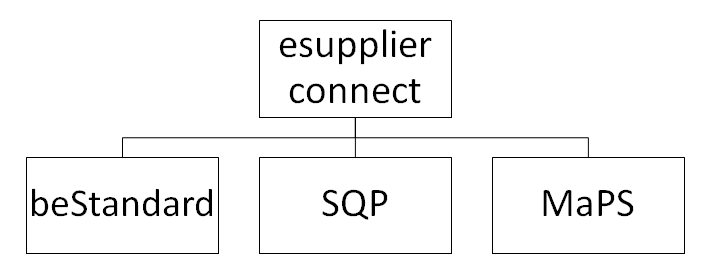IATF’s requirements include section 5.3.1, “Organizational roles, responsibilities, and authorities – supplemental”, stating that top management should designate personnel with specific responsibilities and authority to meet customer requirements, including, but not limited to, customer portals and scorecards.
In cooperation with Stellantis-FCA, the above-mentioned is implemented through the use of the following portals: eSupplierConnect, MaPS, SQP and beSTandard.
Additionally, Stellantis-FCA indicates this point in the customer specific requirement (CSR) related to the section “7.2.2 Competences – on the job training” and in the Stellantis-FCA PPAP process audit document in the following questions:
– 1.9. in which is verified production plant access to beStandard portal where are actual customer standards
– 17.7. in which it is verified that the production plant has at least 2 fully trained people with access to eSupplierConnect and to all required Stellantis-FCA systems (including MaPS, SQP, beStandard).
Now that we know the requirements of the IATF, CSR and audit questions from the Stellantis-FCA process audit (VDA 6.3 equivalent), it is worth considering what benefits the plant obtains by accessing these portals.
eSupplierConnect – let’s start from beginning
Being authorized for the eSupplierConnect portal is crucial as this portal is the unified access point for all Stellantis-FCA suppliers. Additionally, through this platform it is possible to apply for access to other systems – see below picture.

It is also worth mentioning the additional advantage of easy access to the application with one login and the possibility of issuing the so-called tickets in case of issue with any database (additionally, you can always include an attachment in the form of a screenshot showing what problem we have with the use of a given portal).
MaPS – APQP portal: new launch and serial production without issues
It’s the most important portal that should be used not only by quality engineers, but also by project and program managers (in particular during managing planning the implementation of ODM changes – Ordine di Modifica) as well as organizational engineering who should manage approvals in the system a validation plan for the part or module being launched, named as Supplier Product Validation.
MaPS is the official Stellantis-FCA system to track part approval based on Stellantis-FCA Standards “07740” or FPT Procedure “FPW.IFP059” referring to the AIAG – PPAP Reference Manual.
An additional advantage of this system is the fact that by introducing certain forms of automation, we do not have to verify the launch status every day directly in MaPS, because we can receive such information via e-mail as provided in the eSupplierConnect portal.
However, if we work with foreign Stellantis-FCA plants, it is invaluable in communication improving to provide all client contact persons defined for each delivered part, from SQE through personnel from the plant who are PE coordinators (Plant Evaluation, i.e. ex-Benestare), and ending with engineering and central quality.
Knowledge of the latter two functionalities is essential for the management of the derogation, which the Stellantis-FCA client defines as IAA – Interim Approval Authorization (see standard 08090 for additional information).
In addition to tracking activities that are carried out by individual customer departments (SQE, plant quality and engineering), the supplier can:
- documents uploading (test plans and test results) for Supplier Product Validation (SPV; ex-PPF, ex-AQF);
- Interim Approval Authorization create (IAA; ex VARIANZA -IRW, deroga);
Summarize, only through eSupplier Connect we can apply for access to other portals, including MaPS. In the next article we will look the other two portals – SQP and beStandard.
Download our free ebook “Stellantis-FCA EMEA/LATAM Everything You Need To Know About Cooperation“


